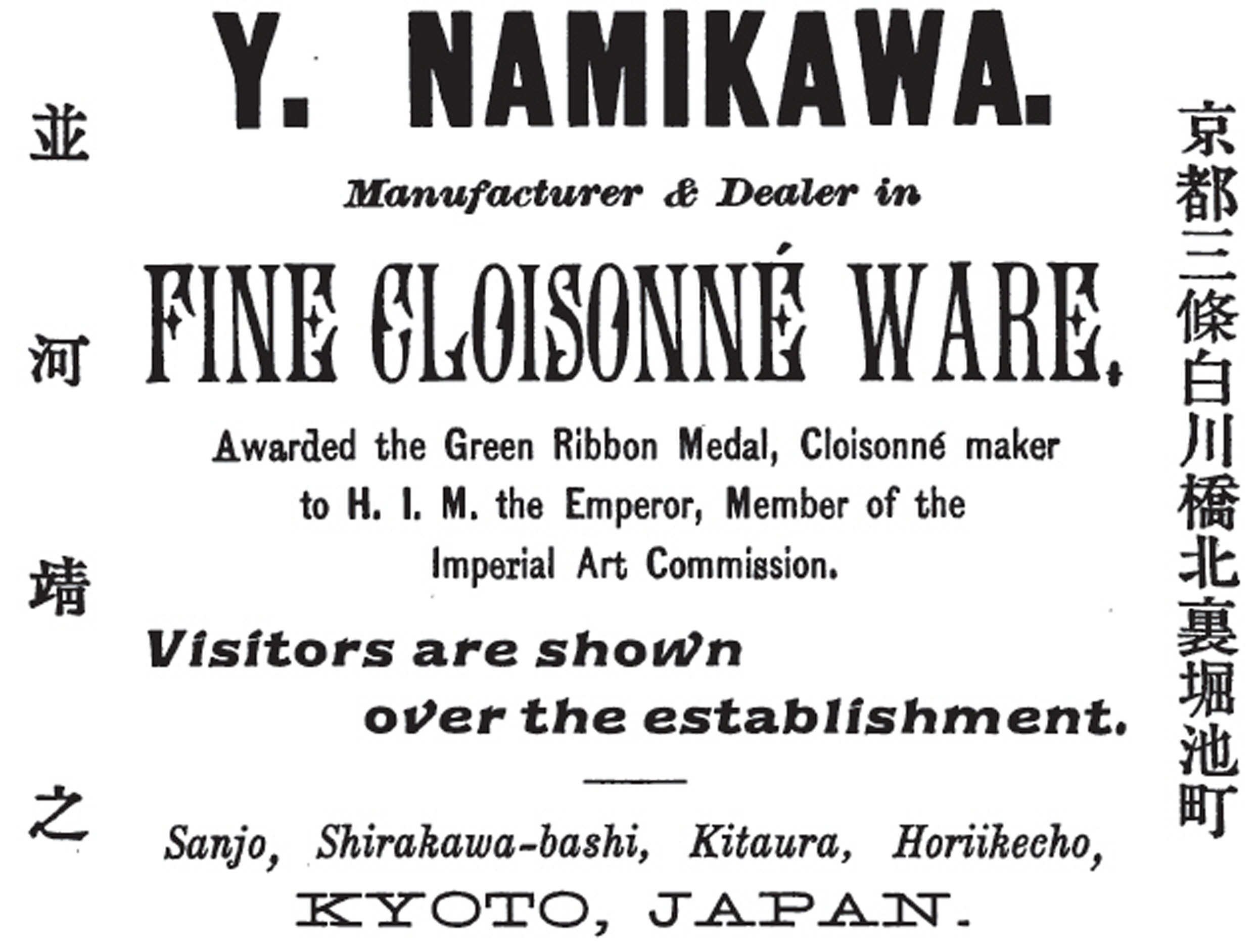In the form of a Temple Bell
Intricately worked in silver wire and various coloured cloisonné enamels with panels of green and pink containing four-clawed dragons with sacred pearls, ho-o birds between borders of clouds and roundels with waves, applied silvered studs, patinated copper finial in the form of two dragon heads and a sacred pearl, the base with a ho-o bird, gilt liner and rims, elaborate carved wood stand
15 ¼ in (38.5 cm) high, including stand
cf. Herbert George Ponting, In Lotus-Land Japan, London, 1910, p.58,61,65
George Henry Peters, Impressions of a Journey Round the World, Including India, Burmah and Japan, London, 1879, p.239, 240-241
Namikawa won prizes at the Philadelphia World Fair of 1876, and then at the Paris World Fair of 1878, and later at the 1889 Paris Fair. He was also honoured at the series of National Industrial Expositions which was instituted in 1877. He won altogether 31 prizes at expositions both at home and abroad. In 1896 together with the unrelated Namikawa Sosuke, Yasuyuki was appointed as a Teishitsu Gigeiin, or ‘Imperial Artist’, the only two cloisonné makers to be so honoured. The present lot, one of the larger and finely worked examples of cloisonné ware from Namikawa’s studio is an outstanding demonstration of his extraordinarily skillful gold wire and enamelwork.
By the early 1890s his Kyoto workshop, where he employed some ten artists, was a popular destination for wealthy Western tourists. In fact it appears that a high proportion of his output (leaving aside the many works he produced for display at international expositions) was commissioned directly. As a later enthusiast, the photographer and Antarctic film-maker Herbert G. Ponting, was to write of a visit made in 1903:
“…seldom, if ever, does the product of Namikawa’s house appear in any of the shops. His output is so small that the demand for it from visiting connoisseurs and collectors is sometimes more than equal to the supply. There is no catering for the trade.”
In 1897 the Englishman George Henry Peters published an account of his trip from which we learn that like so many contemporary globetrotters, he devoted much of his time in Kyoto to the purchase of embroidery, porcelain and enamel. On 5th April he visited:
“the interesting silk embroidery establishment of Nishimura, the cloisonné enamel workshops of NamIkawa [sic], porcelain factory of Kinkozan and the art curio museum of Ikeda [Ikeda Keisuke, the well-known Kyoto dealer]”.
The visit to Namikawa in particular seems to have left a profound impression on Peters (as it would a decade later on Ponting), who wrote about the processes he observed at unusual length:
“Cloisonné, or shippo, is a kind of enamel, having a very beautiful polish and colours, and the process of manufacture is a long and intricate one. First the coppersmith moulds and cuts the copper into the shape desired, then the wire is fixed on the piece accurately according to the design already drawn. The spaces between the wire are then filled in with enamel of different colours and fired. This firing process is repeated seven or eight times, and each time more enamel is filled in. After the firing is complete, the piece passes into the polishers’ hands, and is then turned out as a finished specimen of cloisonné.”
This product of Namikawa’s spotless room, twenty feet in length, the floor covered with padded mats, on which, bending over, were ten artists exemplifies the skill and confidence of one of Japan’s greatest workshops and shows Namikawa Yasuyuki and his craftsmen at the height of their creative and technical powers.



















